Share markets were mixed over the last week. US shares pushed higher helped by tech and AI optimism and despite a bit of profit taking at the end of the week rose 0.6%. Eurozone shares rose 1.1% recovering some of their losses from the week before as fears around the French election settled down a bit. However, Japanese shares fell 0.6% and Chinese shares fell 1.3%. Australian shares rose by 0.9% helped by the positive US lead despite more hawkish comments from the RBA with utility, financial, health and telco shares leading the gains. Bond yields mostly rose. Oil prices rose but metal prices and the iron ore price fell. The $A rose with slightly hawkish RBA comments, but the $US also rose.
Nvidia briefly made it to be the world’s biggest company in terms of market capitalisation in the past week, but narrowing breadth in US share market gains is signalling caution on shares. When share market gains are broad based it provides confidence in their durability. This has been evident through much of the bull market since October 2022 in good gains in the equal weighted US S&P 500 index (where each share has an equal weight). Since May though gains have been ever more narrowly driven by a handful of mega cap tech stocks driven in particular by enthusiasm for AI with Nvidia leading the charge whereas the equal weighted index has not regained its May or even March highs. This can go on for a while and July is often a seasonally strong month for shares, but the narrowing gains at a time of poor valuations (evident in the narrowing earnings yield less bond yield gap), elevated (but fortunately not extreme) levels of investor sentiment and technically overbought conditions warn that we could see another correction ahead, possibly in the softer seasonal months of August and September. This is particularly so given ongoing recessions risks and geopolitical risks around France and as the US election comes into sharper focus. While Australian shares have not done anywhere near as well as US shares given their low tech exposure, they would still be vulnerable to any US driven volatility. That said, despite the risk of another correction we continue to see further gains in shares this year as disinflation continues, more central banks including the Fed and later this year the RBA join in cutting rates and as recession is avoided or proves mild.
The past week saw some stabilisation in Europe and specifically French shares and bond yields, albeit the spread between French and German bond yields still edged up to its highest since 2012. While the success of far-right parties in the EU elections overall was less than feared, the calling of the French election with the possibility that the far-right National Rally could win government has created policy uncertainty. Polling has the far right in the lead but not enough to claim a majority and it’s complicated by the two round first past the post voting system. There are several reasons for optimism though that a return to a full blown Eurozone crisis will be averted: popular support for the Euro remains high in France and National Rally has long ago dropped its policy to leave the Euro; surging bond yields will likely influence National Rally to modify its extreme policies much as occurred for extremist parties over the last decade in Europe most recently with the Brothers of Italy – and this already appears to be occurring; and the ECB retains tools that can be deployed to calm individual bond markets. That said, the uncertainty in Europe could be around for a while yet particularly if National Rally does well in the election starting Sunday 30 June or it looks like no party will be able to form a government. And this could impact global and Australian markets at times.
The drip feed of rate cuts globally continued over the last week with the Swiss central bank cutting rates for a second time taking its policy rate to 1.25%. The Bank of Norway left rates on hold with a more hawkish bias than previously. But the Bank of England held at 5.25% but with 7 votes for a hold and 2 for a cut as in the last meeting and it indicated that the decision to hold was “finely balanced” for some officials suggesting more may be close to supporting a cut with Governor Bailey welcoming the fall in inflation. The UK money market now sees an 86% chance of cut in August and has priced in two cuts this year.
A hawkish hold from the RBA at 4.35%, but we still see a rate cut late this year. The RBA provided no big surprises and is still “not ruling anything in or out”, but its language around inflation still being too high continues to lean hawkish with only a hike or a hold on the table and its arguably a bit more hawkish than in May with the RBA reinstating a comment that it “will do what is necessary” to return inflation to target. Our view remains that inflation will resume its downswing, as has occurred in various other countries after pauses including the US, and that as a result rates have peaked ahead of a start to rate cuts late this year, or if not then early next year. Stalling growth, a cooling labour market and the lower national wage case decision this year are all consistent with that. And the swing back towards more rate cuts this year in the US and UK are also positive signs for what may happen in Australia. However, the risk of another hike in the near term is material and the RBA’s hawkish tone makes the August meeting critical as it will review its forecasts then and will be “live” for another hike if we are wrong and June quarter inflation to be released at the end of July surprises on the upside again. Key to watch will be June quarter inflation data (with another 1%qoq rise or 4%yoy in the trimmed mean likely to be a big concern for the RBA) and any early readings on how the tax cuts are impacting spending.
Australian government decisions are continuing make the RBA’s job harder. State budgets – the latest being in NSW – are continuing the fiscal easing seen Federally. This is evident in the next chart showing a big turnaround from fiscal contraction in 2022-23 to fiscal easing now. While much of this easing has come from “cost of living” relief measures which temporarily lower headline inflation, it adds to demand in the economy which keeps inflation higher than it otherwise would have been. Government support for stronger wages growth which adds to cost pressures and the surge in population growth which has worsened the housing shortage have also added to the problem. All of which are contributing to higher than otherwise inflation. In other words, government decisions – while potentially popular with voters – are making the RBA’s job harder with the end result being higher for longer interest rates. Its yet again a reminder of why responsibility for getting inflation is in the hands of the RBA and not politicians. Unfortunately, it means we have to continue to rely on the blunt instrument of high interest rates with its unfair impacts on different parts of the community.

Source: Australian and state treasuries, AMP
The pros and cons of Australia going nuclear? The Australian Liberal/National Coalition plan for seven nuclear power plants across Australia has intensified the debate about how best to reach net zero by 2050. Without getting into the details here is a quick guide to the pros and cons of nuclear.
- The pros are that: it generates next to zero carbon emissions; it provides reliable baseload energy, which will still be necessary for a small portion of energy supply as solar/wind + batteries cannot meet all energy needs; its proven unlike green hydrogen; it uses far less space than solar & wind; it does not visually scar the environment; and we have lots of uranium.
- The cons are that: it has a history of major accidents which can be catastrophic; it generates waste that needs to be isolated for 10,000 years plus; new nuclear plants have a long history of time and cost blowouts; this might be worse for Australia as we are starting from scratch; delays could be magnified to 20 years plus in a democracy like Australia; its currently banned in Australia so the law would have to be changed which will likely be impossible if the balance of power in the Senate is with the Greens and independents; it’s been in decline globally as a share of energy production with more closures than new plant openings (outside of China); various estimates suggests it’s between 50% to 150% more expensive per unit of power than solar/wind + batteries; and the cost of nuclear energy has been going up relative to the cost of solar/wind + batteries which has been falling.
But there are two other big issues with nuclear. First, the nuclear proposal runs the high risk that the push to renewables is delayed yet again as private energy providers and investors are scared off by the uncertainty. Second, the Coalition proposal appears to be for a big chunk of power generation in Australia to be renationalised taking us back to where we were more than 30 years ago. This would mean more public debt and even “bigger government” than the current Government’s Future Made in Australia plan implies. The sensible solution was to put a price on carbon years ago and let the private sector sort out which is the best way to reach net zero and in the process take on the bulk of the risk rather than taxpayers. Unfortunately, the rejection of carbon pricing in favour of “direct action” seems to be leading to bigger government with politicians operating on the misplaced belief they can pick winners.
Major global economic events and implications
June business conditions PMIs rose slightly in the US but fell in Europe, the UK, Japan and Australia, with the G3 average edging down. G3 input prices remain elevated but output prices fell to 2018 levels and work backlogs continue to fall which is positive in terms of inflation.

Source: Bloomberg, AMP
While US business conditions PMIs edged up slightly in June and May industrial production rose strongly, other US data was on the soft side over the last week. The New York and Philadelphia regional manufacturing conditions indexes remained softish. The leading index for May fell again and continues to warn of a high recession risk. Housing starts, permits to build new homes, the NAHB home builders’ conditions index and existing home sales all fell and are around subdued levels.

Source: Bloomberg, AMP
US May retail sales again surprised on the downside pointing to weak consumption growth this quarter and suggesting that the US consumer may be starting to run out of puff with slower wages growth. And while initial jobless claims fell the trend is up and continuing claims rose again.

Source: Macrobond, AMP
UK inflation down again in May. At a headline level it has now fallen to 2%yoy, having peaked around 11%yoy in 2022. Of course that’s been helped by high base effects dropping out with lower energy price inflation. Core inflation fell more than expected but is still high at 3.5%yoy. And unfortunately, services inflation is still sticy and fell less than expected to 5.7%yoy, which partly explains why the BoE has held rates for now. But as noted earlier it appears to be getting closer to cuts.

Source: Macrobond, AMP
Japanese business conditions PMIs softened sharply in June with the composite PMI falling back to 50 with weak services. Inflation rose less than expected to 2.8%yoy in May, with core (ex food and energy inflation) falling to just 1.7%yoy which is down from 2.8%yoy in December. This will likely keep the BoJ cautious in raising rates.
New Zealand GDP up slightly but very weak. March quarter GDP rose 0.2%qoq after two consecutive negative quarters but annual growth is just 0.3%yoy. Tax cuts will help in the second half but growth is still likely to remain weak. RBNZ rate cuts are expected to start in November.

Source: Macrobond, AMP
Chinese economic data was softish. Retail sales growth rose more than expected but this may be due to holiday timing versus last year and the trend is soft (see the next chart), investment was subdued but in line with expectations and industrial production slowed more than expected with home prices and property investment continuing to fall. We continue to see GDP growth this year coming in around 4.5-5%, but this probably requires more policy stimulus. On this front, while the PBOC is not rushing into a rate cut it still looks to be on the way and it looks to be heading towards the introduction of buying and selling government bonds to influence liquidity and interest rates. In the near term this is likely to be more skewed towards buying bonds which may be seen as a form of quantitative easing. In the absence of sharply lower economic conditions policy stimulus is likely to remain gradual though.

Source: Bloomberg, AMP
Australian economic events and implications
Australian business conditions PMIs for June showed a further deterioration, driven by both services and manufacturing, suggesting the improvement seen earlier this year is giving way to weakness again. New orders fell sharply.

Source: Bloomberg, AMP
Price measures getting back on track. While output price component of the PMI survey remained range bound input prices resumed their downtrend led by services which is a good sign.

Source: Bloomberg, AMP
Other Australian economic data was soft with new home sales falling back to weak levels in May after regulatory changes pulled forward sales into April, ANZ jobs ads continuing to slide and now being down 18%yoy and company insolvencies are continuing to trend up. The latter was initially a catch up to the pandemic pause but is now starting to reflect weaker economic conditions and its broadening out beyond construction and retail companies.

Source: ASIC, AMP
Ultra-low rental property vacancy rates are continuing to drive strong growth in rents. Annual rental growth may have slowed a bit but it’s still very high. The key solution to boosting rental and housing affordability is to boost the supply of homes relative to population driven demand.

Source: REIA, AMP
What to watch over the next week?
In the US, the focus will be back on inflation with May core private final consumption inflation (core PCE) due Friday, with CPI and other inflation data for May pointing to a drop to a 0.1%mom rise bringing the annual rate down to 2.6%yoy from 2.8%yoy. This will be welcomed by the Fed as it’s the core PCE that it targets and follows the hotter inflation readings seen though the March quarter. In other data, expect to see slightly softer consumer confidence and home price growth (Tuesday), flat durable goods orders for May (Thursday) and sluggish growth in May personal spending data (Friday). The first presidential debate (Thursday) will likely start to increase market focus on the US election with a risk that talk of a new intensified tariff war under Trump may start to make share markets nervous.
Canadian CPI inflation for May (Tuesday) is expected to show a further fall to 2.6%yoy from 2.7%yoy.
In Europe the focus will be on the first round of the French parliamentary elections on Sunday, where strong outcomes for the far-right National Rally may be taken badly.
The Swedish central bank (Thursday) is expected to leave its key policy rate on hold at 3.75%, after cutting at its last meeting.
Japanese data for May (Friday) is expected to show unemployment remaining around 2.6% with a bounce in industrial production.
In Australia, the focus will be on the May monthly CPI (Wednesday) which is likely to show an implied fall of 0.2%mom after several strong months helped by a 3% fall in petrol prices. May also has a seasonal tendency to weakness having fallen in four of the last six years. However, because of a 0.4% fall a year ago dropping out, the annual CPI increase is expected to rise to 3.8%yoy from 3.6%yoy. Meanwhile, the Westpac/Melbourne Institute consumer survey (Tuesday) is likely to show that sentiment remained very weak in June. Private credit data for May (Friday) is likely to show a further uptick in housing credit growth. Speeches by RBA Assistant Governor Kent (Wednesday) and Deputy Governor Hauser (Thursday) will be watched for any clues on the outlook for interest rates.
Outlook for investment markets
Easing inflation pressures, central banks moving to cut rates and prospects for stronger growth in 2025 should make for reasonable investment returns this year. However, with a high risk of recession, delays to rate cuts and significant geopolitical risks, the remainder of the year is likely to be rougher and more constrained than the first three months were.
We expect the ASX 200 to return 9% this year and end the year around 7900. A recession is probably the main threat.
Bonds are likely to provide returns around running yield or a bit more, as inflation slows, and central banks cut rates.
Unlisted commercial property returns are likely to remain negative again due to the lagged impact of high bond yields & working from home.
Australian home prices are likely to see more constrained gains this year as the supply shortfall remains, but still high interest rates constrain demand and unemployment rises. The delay in rate cuts and talk of rate hikes risks renewed falls in property prices as its likely to cause buyers to hold back and distressed listings to rise.
Cash and bank deposits are expected to provide returns of over 4%, reflecting the back up in interest rates.
A rising trend in the $A is likely taking it to $US0.70 over the next 12 months, due to a fall in the overvalued $US, but in the near term the risks for the $A are on the downside.
What you need to know
While every care has been taken in the preparation of this article, neither National Mutual Funds Management Ltd (ABN 32 006 787 720, AFSL 234652) (NMFM), AMP Limited ABN 49 079 354 519 nor any other member of the AMP Group (AMP) makes any representations or warranties as to the accuracy or completeness of any statement in it including, without limitation, any forecasts. Past performance is not a reliable indicator of future performance. This document has been prepared for the purpose of providing general information, without taking account of any particular investor’s objectives, financial situation or needs. An investor should, before making any investment decisions, consider the appropriateness of the information in this document, and seek professional advice, having regard to the investor’s objectives, financial situation and needs. This article is solely for the use of the party to whom it is provided and must not be provided to any other person or entity without the express written consent AMP. This article is not intended for distribution or use in any jurisdiction where it would be contrary to applicable laws, regulations or directives and does not constitute a recommendation, offer, solicitation or invitation to invest.




